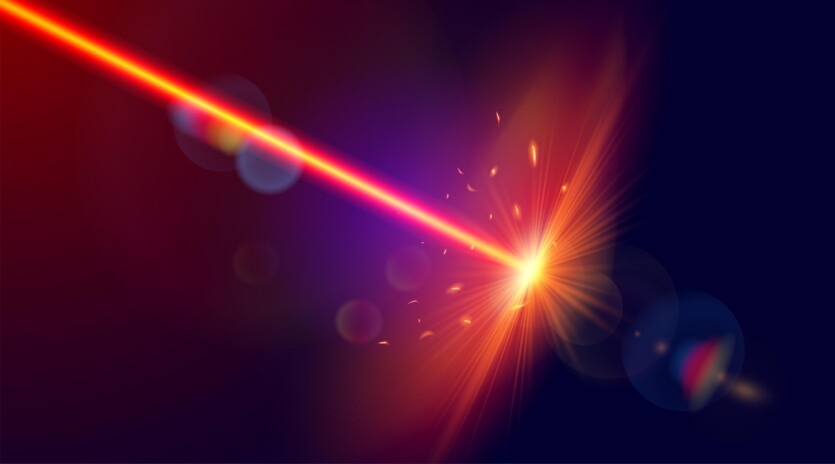
Italian physicists for the first time managed to use the energy of light to create a superfluid solid A superfluid solid is a thermodynamic phase of a quantum fluid, which is a solid with the properties of a superfluid. When a quantum fluid is cooled to a certain temperature, it acquires superfluid properties (in particular, zero viscosity, i.e., no friction)
A superfluid solid is a thermodynamic phase of a quantum fluid, which is a solid with the properties of a superfluid. When a quantum fluid is cooled to a certain temperature, it acquires superfluid properties (in particular, zero viscosity, i.e., no friction)
«We have actually turned light into a solid. That’s pretty cool,», — said the physicist of the National Research Council of Italy Dimitrios Tripogeorgos.
In fact, the scientist’s statement is somewhat exaggerated, as the researchers simply direct the laser on a section of semiconductor with a special pattern with narrow protrusions and due to the interaction of light and semiconductor, hybrid particles called polaritons The achievement builds on earlier work by the scientist from National Research Council of Italy Daniella Sanvitto, who proved more than 10 years ago that light can be used to form unusual quantum materials
The special pattern applied to the semiconductor was crucial in limiting the movement of these particles and their energy levels, allowing them to combine into a solid superfluid body. In their study, Italian scientists used gallium-aluminum arsenide as a semiconductor.
The team faced a serious challenge in confirming their results: they needed to accurately measure quite a few properties of this newly formed superhard body to prove that it really has the characteristics of both a solid and a viscosity-free liquid.
Until now, such unusual materials could only be obtained in controlled experiments with atoms cooled to extremely low temperatures Quantum effects in such conditions were best able to show themselves and become available for observation. According to Alberto Bramati of the Sorbonne University, the study provides a broader understanding of how quantum matter changes its state through a phase transition. However, the scientist added that additional measurements and analyzes are needed to fully understand the properties of this substance.
Tripogeorgos, for his part suggested that such forms of matter can be more controllable than those formed with atoms. This makes it possible to explore new, unusual states of matter in greater depth.
The study was published in the journal Nature
Source: Interesting engineering

Spelling error report
The following text will be sent to our editors: